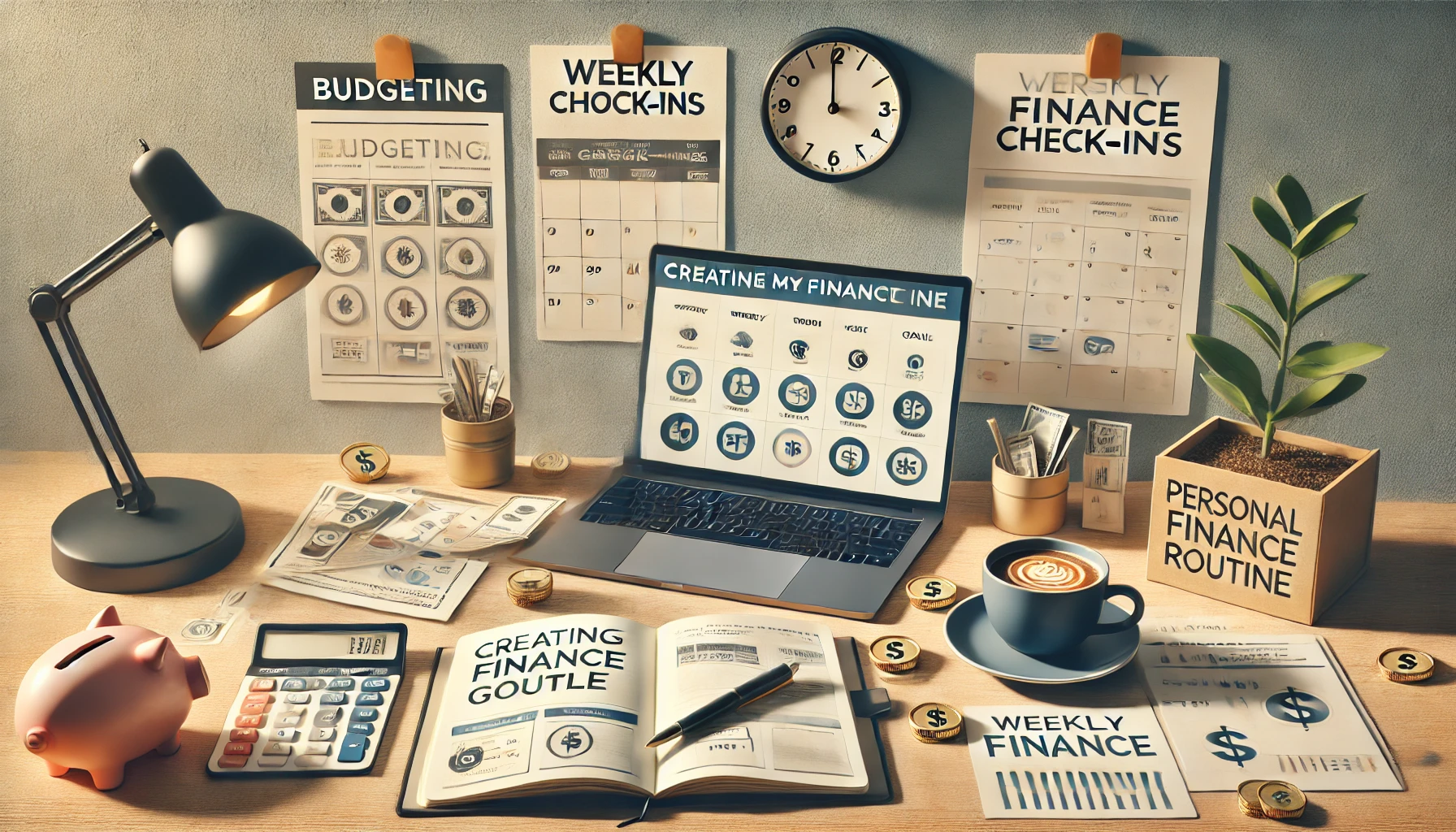Managing your money once in a while isn’t enough. True financial progress comes from consistent, small actions repeated over time. That’s why having a personal finance routine is so powerful—it keeps your goals on track and your stress levels low.
In this article, you’ll learn how to create a simple, effective personal finance routine that works for your lifestyle—and helps you build long-term financial success without burnout.
Why You Need a Finance Routine
Most people think about money only when something goes wrong—like an unexpected bill or a low bank balance.
But when you build a routine, you: ✅ Stay ahead of problems
✅ Catch mistakes early
✅ Make better spending decisions
✅ Stick to your budget and savings plan
✅ Reduce financial anxiety
Think of it like hygiene—just like brushing your teeth, your money needs regular care.
Step 1: Choose a Day and Time That Works for You
Consistency is key.
Choose one day a week and one time of day when you can focus without distractions.
Popular choices:
- Sunday evening: Plan for the week ahead
- Friday morning: Check in before weekend spending
- Midweek lunchtime: Quick, quiet moment to focus
Put it in your calendar or set a reminder—make it a real appointment with your money.
Step 2: Create a Weekly Money Check-In (15–30 Minutes)
Your weekly check-in keeps everything running smoothly. Here’s what to do:
✅ Review your current account balances
- Bank accounts
- Credit cards
- Digital wallets (like PayPal, Venmo)
✅ Look at upcoming expenses
- Bills due this week
- Subscriptions or renewals
- Social plans or one-time purchases
✅ Track your spending
- See where your money went
- Categorize it if needed
- Note any areas of overspending
✅ Adjust your budget
- Move funds if necessary
- Reduce categories that are running low
- Stay flexible without quitting
✅ Celebrate small wins
- “I didn’t overspend on food this week!”
- “I saved an extra $25!”
These weekly check-ins create awareness and control.
Step 3: Add Monthly Review Sessions (30–60 Minutes)
Once a month, go deeper.
Your monthly money routine should include:
- Reviewing your budget vs. actual spending
- Tracking your income and savings progress
- Updating debt balances and payments
- Setting goals for the new month
- Noting any upcoming big expenses (trips, birthdays, taxes)
Use this time to reflect and adjust your plan based on real life.
Step 4: Set Up Monthly Finance Tasks
These can be part of your monthly routine or done separately.
Monthly tasks might include:
- Paying credit card bills in full
- Reviewing automatic payments and subscriptions
- Moving money to savings or investments
- Backing up important documents or receipts
- Checking your credit score
💡 Tip: Create a recurring monthly checklist to stay on track.
Step 5: Automate What You Can
The less you have to remember, the easier it is to stay consistent.
Automate:
- Bill payments
- Transfers to savings/investments
- Budget alerts
- Credit card due date reminders
- Weekly or monthly finance check-in reminders
Automation reduces errors and builds habits—without relying on willpower.
Step 6: Keep a Finance Journal or Tracker
Writing things down helps you stay connected to your goals.
Use a:
- Simple notebook
- Printable habit tracker
- Digital spreadsheet
- Note-taking app (like Notion or Evernote)
Record:
- What you did this week
- What you learned
- Wins and setbacks
- What you’ll focus on next
You’ll be surprised how motivating it is to see your progress over time.
Step 7: Make It Enjoyable
Your routine doesn’t have to feel like homework.
Make it enjoyable by:
- Playing your favorite music or podcast
- Brewing a nice cup of coffee or tea
- Doing it with your partner or a friend
- Using stickers, colors, or apps that feel fun
Turn it into something you look forward to—not just another task.
Sample Weekly Finance Routine
Time needed: ~20 minutes
- Open budgeting app/spreadsheet
- Check bank balances and transactions
- Track and categorize new expenses
- Check calendar for upcoming bills
- Review progress on savings/debt goals
- Adjust categories if needed
- Log notes in finance journal
- Celebrate a small win 🙌
Simple. Focused. Powerful.
Final Thought: Small Habits Create Big Change
A solid finance routine isn’t about perfection. It’s about showing up—week after week, month after month—and building habits that protect your money, support your goals, and reduce stress.
Start small. Stay consistent. Your future self will thank you for every check-in, every note, and every tiny step.
Financial confidence is built through routine—and now, you have one.
